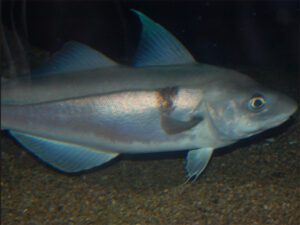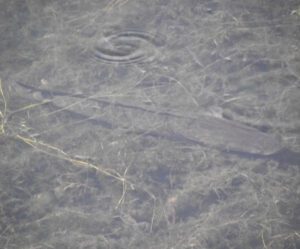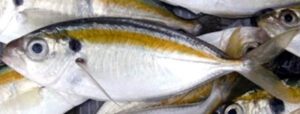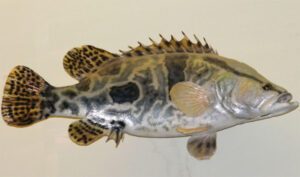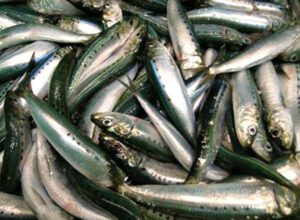Basa fish is a very common and popular fish species in many countries around the world. It is highly valued as food source and the demand is always high in the international market. It is native to the Mekong and Chao Phraya basins in Mainland Southeast Asia.
Basa is actually is a species of catfish in the family Pangasiidae. They are known and called by many different names in different parts around the world. They are often called “Basa fish”, “Swai” or “Bocourti” in North America and Australia.
In the United Kingdom, all species of Pangasius may legally be described as “River Cobbler”, “Cobbler”, “Basa”, “Panga”, “Pangasius”, or any of these with the addition of “Catfish”. It is commonly marketed as “Pangasius” or “Panga” in many European countries.
And in Asian markets, names of Basa fish include “Pacific Dory”, “Patin” and many other local names. However, read more information about this popular fish species.
What is Basa fish?
Basa fish is a type of freshwater fish that is native to Southeast Asia. It is specifically native in the Mekong River region. It is also widely known as swai and it is highly popular throughout the world mainly for its mild flavor and a tender, flaky texture. The scientific name for Basa fish is Pangasius bocourti.

Characteristics
Like many other fish species, the Basa fish has several distinct physical characteristics. It has a long, heavy, slender, and somewhat flattened body. And it has a prominent, long dorsal fin and a forked tail fin.
Their head is rounded and broader than the length, with the blunt snout having a white band on its muzzle. You can easily recognize a Basa fish by looking their head.
Basa fish have long, barbles on either side of their mouths. And they use their barbels to sense their environment. In terms of coloration, these fish are typically light gray to white on the underside, with a darker gray or bluish hue on the back.
Size and weight
The Basa fish are large and heavy. They typically grow to about 90 cm in length. Their average body weight is between 15 to 30 pounds. Sometimes they can even grow larger, especially in the wild.
Diet
The Basa fish are primarily omnivorous. Their diet typically includes plant matter, small fish and invertebrates. But, in commercial production, they are often fed a formulated diet that includes pellets made from fish meal, soy, and grains. Feeding this type of commercial food ensure balanced nutrition and promote growth.
Behavior
Basa fish are generally social and they are often found in groups in their natural habitat. They are very active swimmers and prefer to stay in the middle to upper levels of water column. They grow well in warm, freshwater environment. They are opportunistic feeders, and they often forage for food during the day and at night.
Reproduction
Basa fish typically spawn during the rainy season. Water levels raise during this season and the conditions become favorable. They generally engage in group spawning. Multiple males and females come together. Females release eggs and the males release sperm. The fertilization process occurs externally. The eggs typically hatch within a few days.
Lifespan
Average lifespan of Basa fish is typically between 10 to 15 years in the wild.
Uses
Basa is widely used as food in many countries around the world. It is very popular and widely consumed food mainly due to its mild flavor and flaky texture. It is also an important export product for some Asian countries such as Vietnam.
Cooking and recipes
The Basa fish can be cooked in many different ways. Here we are shortly listing some most common and popular recipes or cooking ways.
Grilling: Grilling is the most popular way of cooking Basa fish. You will need Basa fillets, olive oil, lemon juice, garlic, salt, pepper, and your preferred herbs. Marinate the fillets in olive oil, lemon juice, minced garlic, salt, pepper, and herbs for about 30 minutes. Preheat the grill and grill the fillets for about 4-5 minutes on each side.
Baking: Take Basa fillets, lemon slices, butter, garlic, salt and pepper. Preheat the oven to 375°F. Place the fillets in a baking dish and top with lemon slices, butter, minced garlic, salt and pepper and bake for 20 to 25 minutes.
Frying: Take Basa fillets, flour, cornmeal, salt, pepper, and oil for frying. Mix the flour, cornmeal, salt and pepper in a bowl. Dredge the fillets in the mixture. Heat oil in a skillet and fry the fillets for about 3-4 minutes on each side.

Nutrition
Basa fish is highly nutritious. It is low in calories and high in protein. A 100 grams serving provides:
- Calories: Approximately 90-100 kcal
- Protein: About 18-20 grams
- Fat: Around 2-4 grams
- Saturated Fat: About 0.5 grams
- Carbohydrates: 0 grams
- Fiber: 0 grams
- Cholesterol: Approximately 50-60 mg
- Sodium: Variable, depending on preparation
Health benefits
As Basa fish is highly nutritious, so consuming it provides several health benefits. It is a good source of lean protein which is essential for muscle growth and repair. It is relatively low in calories. It is a good source of omega-3 fatty acids. These acids help to reduce the risk of heart disease and support overall cardiovascular health. It is easy to digest and provides several vitamins and minerals.
Taste
Basa fish flesh is tender and flaky, and has slightly sweet flavor. It is very tasty and can be cooked in many different ways. Addition of different herbs and spices enhance it’s taste.
Price
Exact price of Basa fish depends on numerous factors, and can vary from place to place. Generally, you can expect to pay around $5 to $10 per pound fillets in the United States.
Where to buy Basa fish near me?
You can buy Basa fish from your nearest grocery stores, fish markets, and even from online retailers.
Frequently asked questions
People often ask several questions regarding the Basa fish. Here we are trying to list the most common and notable frequently asked questions.
Is Basa fish healthy?
Yes, Basa fish is generally considered healthy. It is high in protein, but low in fats, and also contain heart-healthy fats. It is low in Mercury levels and Rich in Vitamins and Minerals. Although, you should cook the fish properly and consume in moderation.
Why is Basa fish banned?
Actually, the Basa fish itself is not universally banned. But there have been restrictions and controversies surrounding its importation in some countries, particularly in the United States. There were regulation preventing imported fish from being labeled as “catfish”, which is a specific designation for certain species.
Is Basa fish safe to eat?
Yes, Basa fish is considered safe to eat. Although, you should consume it moderately.
How to cook Basa fish?
Cooking Basa fish is very easy and simple. You can grill, bake, or fry these fish. Adding some additional herbs will enhance its taste and flavor.
How to season Basa fish?
Seasoning Basa fish is very easy and simple. Basic seasoning is done by using salt and pepper.
Is Basa fish good for you?
Yes, Basa fish is good for you. It is highly nutritious and a good source of good quality protein. It is low in calories and provides several vitamins and minerals.
Is Basa fish kosher?
No, it is not considered kosher.
What does Basa fish taste like?
Basa fish taste good and has a mild, slightly sweet flavor.


